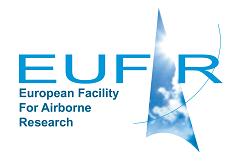Project

UR-TIR- Urban mapping with airborne thermal infra red imagery
Abstract
The overall aim of the project is to explore the potential of airborne thermal imagery for the mapping of urban characteristics. Airborne hyperspectral remote sensing is considered very suitable for urban remote sensing. Its high spatial and spectral resolution enables the mapping of the heterogeneous urban landscape with its small objects and large variety of surface covers. However, still difficulties exist in the correct identification of surface materials with similar spectral characteristics in the reflective range of the spectrum. For example bitumen on roofs and asphalt streets have similar spectral signatures. But for many applications it is important to separate between buildings (roofs) and streets. It is expected that thermal spectral information (e.g. emissivity spectra) will improve the separation of spectrally similar materials on different urban objects. Next to emissivity, also the thermal patterns (land surface temperature, LST) measured with a thermal sensor can be used as an additional information layer. LST plays an important role in the urban energy balance and is therefore an important parameter for the assessment of urban climate but also for questions related to energy and sustainable urban development. Answering the question how the emissivity spectra and the land surface temperature can be used to derive meaningful products for urban climate, energy and sustainable development analysis is the topic of this proposed project.
In detail the following four objectives are formulated for the proposed project:
1.Gaining knowledge on the thermal spectral signatures of urban surface materials by the combined analysis of field and hyperspectral image spectra in the thermal range of the spectrum.
2.Identify products to support micro climate, energy and sustainable development studies which can be derived with the thermal image data
3.Develop methods to retrieve these products using thermal and hyperspectral data analysis methods.
4.Analysis of dependencies between urban surface temperatures and urban morphology parameters and verify these on a second hyperspectral data set.
Details
| Keywords: | EUFAR, hyperspectral |
|---|---|
| Previously used record identifiers: |
No related previous identifiers.
|
Related Documents
| EUFAR Web page |
| UR-TIR project documentation |
